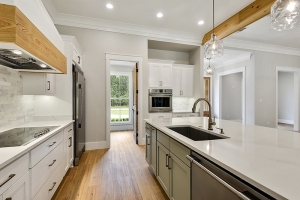A Rise In Home Building In Rural Markets
 The National Home Builders Association (NAHB) has seen a new housing trend with the COVID-19 pandemic. The latest quarterly NAHB Home Building Geography Index (HBGI) found that residential construction is growing faster in lower density markets.
The National Home Builders Association (NAHB) has seen a new housing trend with the COVID-19 pandemic. The latest quarterly NAHB Home Building Geography Index (HBGI) found that residential construction is growing faster in lower density markets.
“We expect the virus could affect future housing preferences for those currently living in the hardest-hit, high-density environments like central cities and that housing demand will continue to increase in medium- and low-density communities,” said NAHB Chairman Dean Mon.
“The first quarter HBGI data reveals that construction growth expanded over the last year more quickly in low population density areas than high-density regions,” said NAHB Chief Economist Robert Dietz. “This trend will continue as households seek out single-family homes further from urban cores, particularly as telecommuting continues in greater numbers.”
The report reveals that proximity and affordability were two of the biggest catalyst in the shift. People are now second-guessing living in metropolitan areas after the public health crisis hit. During the COVID-19 pandemic, metro residents were more vulnerable because of the crowded living conditions, mass transit, insufficient health and public sector infrastructure. Builders are starting to look outside of metropolitan areas where the land is cheaper and there are more building opportunities.
“The HBGI data is consistent with the fact that housing costs are increasing fastest in large metro suburban counties and smaller metro areas with populations under 1 million where demand for housing is high but supply constraints are tight,” said NAHB Chief Economist Robert Dietz. “Supply-side issues that are hurting affordability and raising costs for builders include excessive regulations, labor shortages, rising material costs and a dearth of buildable lots in mid- to high population centers.”
All national economic geographies in the country showed a 9.1% growth increase in the suburbs over a one-year moving average. In the education and health services sector (EHS), 4% made up the total single construction and made up close to twice the growth rate in the multifamily construction over the past year. The HBGI also found that the education and health services sector was the top quartile of counties and totaled 25.7% above the total employment sectors.
Click Here For the Source of the Information.
Click Here For the Source of the Information.



